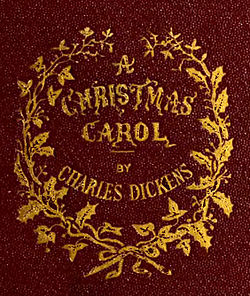
Ebeneezer Scrooge, the “hero” of Charles Dickens’ Christmas Carol (1843) has attained “proverbial” status in the English language, the word “scrooge” being understood as a self-centred killjoy, incapable of spending money for his own good, let alone for the good of others, incapable of simple joys, incapable of being happy, seeing everything in utilitarian or pragmatic terms.
Christmas Traditions
Dickens’ Christmas Carol was first published in 1843 at a time when Christmas traditions, both in England and the United States, were flourishing. The Cromwellian killjoys of the 1640’s and 1650’s banned the singing of Christmas carols, and the celebration of Christmas as we know it. With the Restoration and reign of Charles II, the killjoys were routed. There was a gradual revival of Christmas festivities, both in England, and in the United States. Christmas festivities flourished in Victorian England, exemplified by interest in Charles Dickens’ Christmas writings. There was a similar flourishing of Christmas festivities in the United States in the 19th century, with celebrations made diverse by the many different immigrants from different places and cultures.
The celebration of Christmas has a history stretching to the early Church. The Church took pagan customs, purifying them, and infusing them with the spirit of Christianity. So, the celebration of Christmas is not something new. By the 9th century, Christmas, as we know it, had become part of the liturgical calendar, preceded by the penitential season of Advent, and followed by the Epiphany, the Coming of the Three Wise Men, in early January, and the Presentation in the Temple of the baby Jesus on 2 February.
The celebration of Christmas incorporates all that is beautiful, all that is good, all that is true, all that is human.
Puritan Criticism
As the puritans point out, on occasion, we eat too much and drink too much; on occasion, our celebrating is banal; on occasion, we forget the needs of the poor; on occasion, we are full of ourselves, forgetting both God and those to whom we owe obligations. As persons, as families, as a society, we must consider the manner of our celebration of Christmas. We must reform and enhance Christmas, not abolish it!
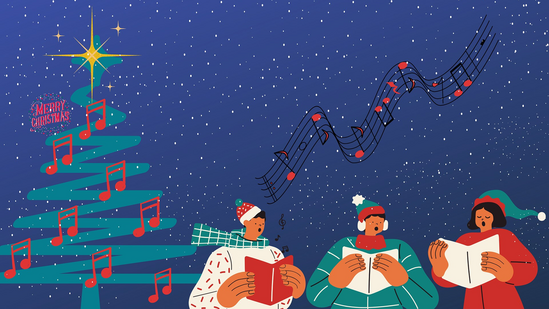
Christmas Carols
The success of the thousands of Christmas carols, most written by unknown or long forgotten authors, is that they express the Christian virtues of charity, of hope, of faith; they are born of profound meditation on, indeed, contemplation of, the Christian mysteries; they can be sung by amateur and professional alike; they can be sung in church, or in more informal, even non-religious, settings; they are not restricted to intellectuals or music buffs; their words are simple but profound; they can be sung by children, by mums and dads, by grandparents, by Uncle Bill, and cousin Sheila, even the man down the street; they transcend denominational boundaries, expressing the essence of Christianity, mere Christianity, as CS Lewis put it.
Coventry Carol
We think of Christmas carols as joyful, but not all are. The Coventry Carol comes from a 16th century English mystery play. It commemorates the slaughter by King Herod of the Holy Innocents, the baby boys of Bethlehem. Herod was reacting to news of the birth of the baby Jesus, brought by the Three Wise Men.
Hark The Herald, Angels Sing
Hark the Herald, Angels Sing was written in 1739 by Charles Wesley, the brother of John Wesley, the founder of English Methodism. Hark the Herald, Angels Sing was Wesley’s response to hearing church bells ringing all over London as he walked the streets on Christmas Day.
Come All Ye Faithful
Come All Ye Faithful (Adeste Fideles) was written in 1744 by John Francis West. West was a Catholic refugee in France from the penal laws in England, prohibiting the practice of Catholicism, and enforcing state-sponsored Anglicanism. West was a Jacobite, opposed to the Protestant Hanoverians installed by the Glorious Revolution of 1688-89 which deposed the Catholic James II as King of England.
Silent Night
The writer of the lyrics of Silent Night was Fr Joseph Mohr, the priest of St Nicholas parish Obendorf, Austria. Fr Mohr used Silent Night at Christmas Mass 1818. The church organ was broken, having been damaged by mice, making it difficult to accompany more customary hymns. Fr Mohr had the parish organist, school-teacher, Franz Gruber, compose the music. Both men sang Silent Night, with Fr Mohr playing a guitar, and the choir repeating the last two lines of each verse.
Neither Fr Mohr nor Franz Gruber did anything subsequently to promote Silent Night. The practice of singing Silent Night spread, more or less spontaneously, all over Europe and the United States. When German soldiers in the trenches in World War I sang the German Stille Nacht, their English counterparts were able to respond with the English Silent Night.
Handel’s Christmas Messiah
Christmas sacred music includes not merely carols but, most important, music written for the liturgy, especially the Mass and the Divine Office. What is sometimes referred to as Handel’s Christmas Messiah is that part of The Messiah which deals with the birth of Jesus, and the events surrounding his birth. Handel was born in what we now call Germany but, at the height of his powers, spent many years in England. The libretto or text of The Messiah was written in 1741 by Charles Jennens, a dissenter, drawing on the King James Bible, and the Book of Common Prayer. Arguably Handel’s Messiah is one of the greatest musical works ever written. It is classified as an oratorio, in this case, the story of the life of Jesus of Nazareth.
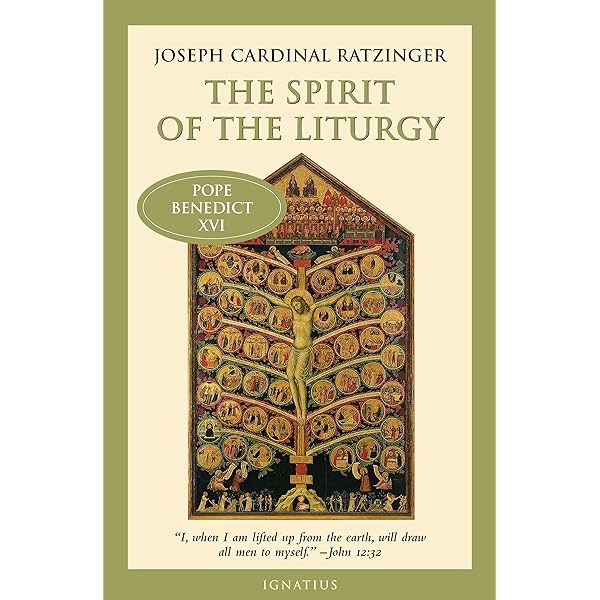
Jewish and Christian Musical Traditions
The word ‘to sing’ (with related words such as “song”, and so forth) is one of the mostcommonly used words in the Bible. It occurs 309 times in the Old Testament and 36 in New Testament. According to Joseph Ratzinger, in the Spirit of the Liturgy, the Christian musical tradition derives from that of Israel, from both the Temple, and from the synagogue:
When man comes into contact with God, mere speech is not enough. Areas of his existence are awakened that spontaneously turn into song. Indeed, the man’s own being is insufficient for what he has to express and so he invites the whole of Creation to become a song with him…
Crossing of the Red Sea
Further Ratzinger comments:
We find the first mention of singing in the Bible after the crossing of the Red Sea. Israel has now been definitively delivered from slavery. In a desperate situation, it has had an overwhelming experience of God’s saving power. Just as Moses as a baby was taken from the Nile and only then really received the gift of life, so Israel now feels as if it has been, so to speak, taken out of the water: it is free, newly endowed with the gift of itself from God’s hands. In the biblical account, the people’s reaction to the foundational event of salvation is described in the sentence: “They believed in the Lord and in his servant Moses” (Ex:31). But then follows a second reaction, which soars up from the first with elemental force: “Then Moses and the people of Israel sang the song to Lord.” (15:1). Year by year, at the Easter Vigil, Christians join in singing this song. They sing it in a new way as their song, because they know they have been “taken out of the water” by God’s power, set free by God for authentic life. The Apocalypse of St John draws the bow back even farther. The final enemies of the people of God have stepped onto the stage of history: the satanic trinity consisting of the beast, its image, and the number of its name. Everything seems lost for the holy Israel of God in the face of such overwhelming odds. But when the Seer is given the vision of the conquerors, “standing beside the sea of glass with harps of God in their hands, they sing of Moses, the servant of God, and the song of the Lamb” (Rev 15:3). The paradox now becomes even more powerful. It is not the gigantic beasts of prey, with their power over the media and their technical strength, who win the victory. No, it is the sacrificed Lamb that conquers. And so once again, definitively, there resounds the song of God’s servant Moses, which has now become the song of the Lamb.
Liturgical singing is established in the midst of this great historical tension. For Israel, the event of salvation in the Red Sea will always be the main reason for praising God, the basic theme of the songs it sings before God. For Christians, the Resurrection of Christ is the true Exodus. He has stridden through the Red Sea of death itself, descended into the world of shadows, and smashed open the prison door. In Baptism this Exodus is made evermore present.
Psalms
According to Joseph Ratzinger, the Jewish musical tradition is epitomised in the book of Psalms:
In their prayed poetry, the Psalms display the whole range of human experiences, which become prayer and song in the presence of God. Lamentation, complaint, indeed accusation, fear, hope, trust, gratitude, joy – the whole of human life is reflected here, as it is unfolded in dialogue with God. It is striking that even complaints made in desperate affliction almost always end up with words of trust, with an anticipation, as it were, of God’s saving act. In a certain sense, one might describe all these “new songs” as variations on the Song of Moses. Singing before God rises up … out of an affliction from which no earthly power can save man – his only refuge is God.
The significance of the Hebrew psalms for Christians is illustrated by the fact that in every single Mass, a psalm is prayed, in response to the readings before the Gospel. The psalm is our response to God’s word.
Hallelujah
Significant in the Jewish musical tradition is the Hebrew word hallelujah which is repeatedly picked up in the Christian musical tradition, for instance, in the dramatic chorus at the conclusion of Handel’s Messiah.
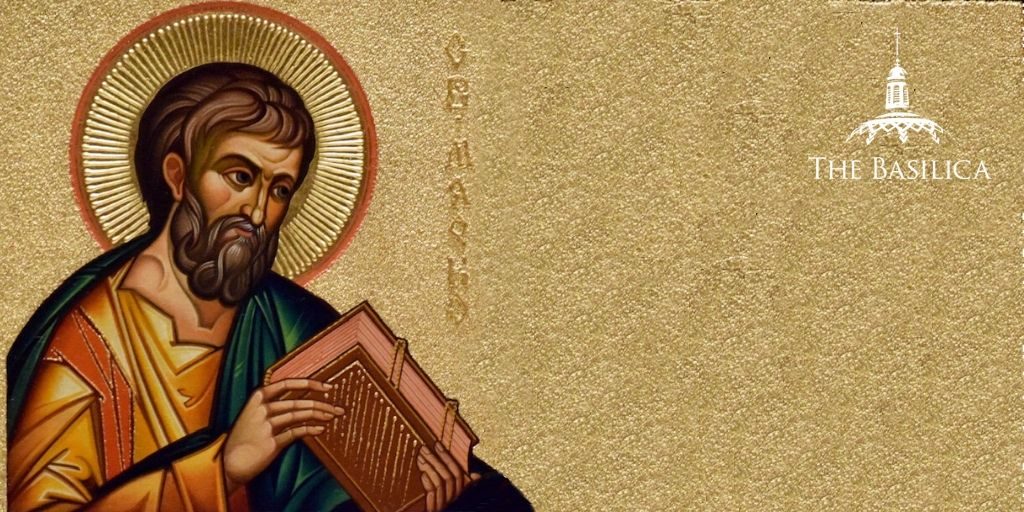
New Testament
After the Last Supper St Mark records the Apostles as having “sung a hymn“, possibly Psalms 115-118, the completion of the Hallel Psalms (113-118) sung during the Passover liturgy. Philippians 2:6-11 is possibly an early Christian hymn. St Paul in Ephesians 5:19 urges the Christians of Ephesus to “be filled with the Spirit, addressing one another in psalms and hymns and spiritual songs, singing and making melody to the Lord with all your heart“. Elsewhere St Paul urges the Colossians to “sing psalms and hymns and spiritual songs with thankfulness in your hearts to God“.
He Who Sings Prays Twice
The ancient adage says: “He who sings prays twice.” In the early Church, Christians developed the practice of singing in monophonic chant. By the High Middle Ages chant was becoming polyphonic. The demands of chant, both in the Mass, and in the Divine Office, recited eight times each day by priests and monks, made for ever increasing sophistication of sacred music. Whether monophonic or polyphonic, the chant in the liturgy directed the singer to the text, inviting meditation, indeed contemplation. Integral to the tradition is both wisdom, meaning, as well as the beauty of the music. The words are integral, the meaning is integral, as is wisdom, as is the beauty of the music. One cannot have one without the other. The Christmas musical tradition derives from the broader Jewish and Christian musical tradition.
Revival of Killjoys
Currently the killjoys have revived a campaign to destroy Christmas, to rid it of meaning, seeking to eliminate even the word “Christmas”. Christmas is inconsistent with the utilitarian, pragmatic logic of woke capitalism. The killjoys wish to stop even using that execrable word “Christmas”. It is incorrect, indeed criminal, to wish another “Happy Christmas”, to give either cards or gifts referring to “Christmas”, to sing Christmas carols, to set up a representation of the crib, or the stable in Bethlehem, to have Christmas dinner with feasting and drinking, to speak of the baby Jesus! Kill off Santa Claus! The killjoys wish to eliminate any substantial meaning for Christmas, the very word Christmas! Happy Holidays! but never Happy Christmas!
The killjoys wish to eliminate the fun which children have at Christmas with the customs, with the pranks, with the leg-pulling, which linger in the memory after the hairs have turned to grey! In their defence, the killjoys say they wish to retain the customs, the pranks, the leg-pulling, but justeliminate the sectarian aspect of Christmas. But if one deprives Christmas of meaning, one destroys Christmas.
What is considered so offensive about Christmas is that Christmas suggests a way of reasoning, an understanding of reality that involves unconditional commitment; love of God, love of marriage and family; respect for the person whoever that person may be, whatever that person’s characteristics (the disabled and sickly Tiny Tim in Dickens’ Christmas Carol); virtues that transcend the logic of pragmatism, of utilitarian calculus.
God Bless Christmas
As Scrooge’s nephew says:
But I am sure I have always thought of Christmas time, when it has come round – apart from the veneration due to its sacred name and origin, if anything belonging to it can be apart from that – as a good time: a kind, forgiving, charitable, pleasant time: the only time I know of, in the long calendar of the year, when men and women seem by one consent to open their shut-up hearts freely, and to think of people below them, as if they really were fellow passengers to the grave, and not another race of creatures bound on other journeys and therefore…though [Christmas] has never put a scrap of gold and silver in my pocket, I believe it has done me good, and will do me good; and I say, God bless it!
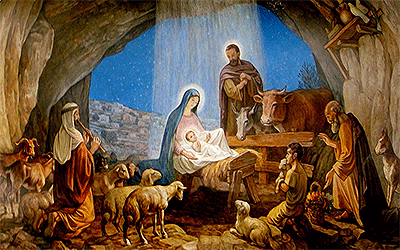
Birth of Jesus of Nazareth
The birth of Jesus of Nazareth is not a single event, but one of a series of related events, recounted by St Matthew from the perspective of St Joseph; recounted by St Luke from the perspective of Mary. The Matthean and Lucan accounts overlap, but each provides detail, not provided in the other. The table below outlines the Matthean and Lucan accounts of the birth of Jesus of Nazareth, and what came before, and what came after:
| Account | Source |
|---|---|
| The genealogy of Jesus Christ | Matthew 1:1-17 |
| The birth of John the Baptist foretold | Luke 1:5-25 |
| Annunciation | Luke 1:28-38 |
| Visitation | Luke 1:38-56 |
| The birth of John the Baptist | Matthew 1:57-66 |
| Zechariah’s prophecy | Matthew 1:67-80 |
| Birth of Jesus | Matthew 1: 18-25; Luke 2:1-7 |
| Shepherds and angels | Luke 2:8-20 |
| The Visit of the Wise Men | Matthew 2:1-12 |
| Jesus is circumcised and named | Luke 2:21 |
| Jesus is presented in the Temple | Luke 2:22-38 |
| Visit of the Wise Men | Matthew 2:1-12 |
| Escape into Egypt | Matthew 2:13-18 |
| Return from Egypt | Matthew 2:19-23 |
| Return to Nazareth | Luke 2:39-40 |
The differences between St Matthew and St Luke are consistent with the later Gospel writer being familiar with the earlier Gospel, and, as it were, “plugging the gaps“, rather than repeating the content of the earlier Gospel.
The way to understand each of the four Gospels is that each derives from the teaching of the Apostlesabout Jesus of Nazareth, Son of God – in particular, from the preaching of St Matthew to the Hebrews; from the early discourses of St Peter and St Paul recorded by Luke in Acts, and from the preaching of St Peter recorded in the Gospel of Mark; from the preaching of St Paul recorded in Luke. Each of the Gospels derives from theGospel preached by the Apostles from the time of Pentecost.
St John
St Matthew and St Luke’s nativity accounts are definitively interpreted by St John in the last of the Gospels to be written. St John the Theologian, in his Gospel, in his three Letters, and in Revelation, the last book of the New Testament, sums up all that is said by earlier inspired writers from a lofty, eagle-like perspective. St John has the last, and most complete, word. Justas St Paul in his Letters provides the earliest canonical Christian writing, so St John provides the last canonical Christian writing. Between the two of them, between St Paul and St John, are framed the synoptic Gospels (Matthew, Mark and Luke) which, maybe, were completed around the 60’s, after the Pauline letters, but before the Johannine corpus.
Jesus Christ
Pope Benedict regards Christianity, as defined, not by the book, the Bible, but by the person of Jesus Christ. Pope Benedict echoes the Second Vatican Council, referring to Jesus Christ as the mediator and sum total of revelation. God the Father reveals himself in his Son Jesus Christ, our way to God is in imitating Jesus of Nazareth. We are sons and daughters of God.
Old and New
Benedict XVI says that in the history of the People of Israel, we can retrace the stages of a long journey during which God entered history, making himself known, and revealing himself. Old Testament figures such as Abraham, Isaac and Jacob, Joseph, Moses, David, even Solomon, foreshadow Jesus of Nazareth. That is why those who read the New Testament without the Old deprive themselves of a real understanding of what Christianity is about, deprive themselves of any possibility of truly understanding the New Testament. The Gospel accounts and other writings of the New Testament cannot be understood except in the context of the Jewish scriptures. Jesus was a Jew, the son of pious and faithful Jewish parents. Jesus’ birth cannot be understood except in the context of the Jewish scriptures.
Jesus the Face of God
Jesus of Nazareth reveals the face of God. As Pope Benedict tells us, the history of salvation is the history of God gradually showing his face, culminating in Jesus of Nazareth. In the baby Jesus, God reveals his face, the face of God. In the Incarnation, the face of God becomes apparent in a way it never was previously. The baby Jesus is all that God reveals. The baby Jesus is the Word of the Father. The whole of our life must be oriented to meeting Jesus, to loving him, to seeing the baby Jesus in Bethlehem, God himself.

Celebrating Christmas
There is every reason to celebrate Christmas with family get-togethers, with drinks, with Christmas dinner, with carols, with gifts, with a Christmas tree, with a star atop the Christmas tree, with a latter-day crib and stable, even with a sheep or cow or donkey! GK Chesterton’s poem The Donkey commemorates Jesus riding into Jerusalem, seated on a donkey, on what we call Palm Sunday, the week before his passion and death. But it also reminds us of the not improbable donkey in the stable in Bethlehem:
Nothing which is good, nothing which is human, should be foreign to us.
Ebeneezer Scrooge begone!
Happy Christmas!
Michael McAuley
Wednesday 22 November
